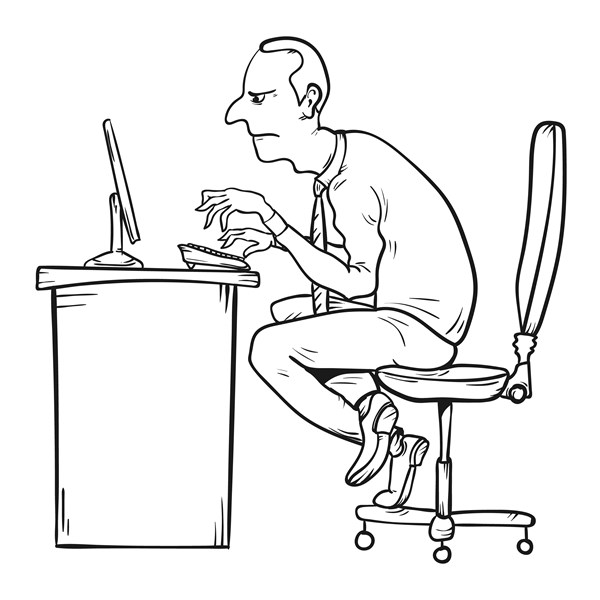It’s February, pretty much everyone in the world is back at work. Apart from the fact that you’re no longer on holidays, there are other reasons why being at work is bad for you. A great number of people suffer from the negative effects of bad posture and yet do not change the factors of their lives which cause them the problem (ie sitting at a desk!). We look at what poor posture looks like, what it means for your health and what treatment can do to help fix it.
Postural dysfunction or “Poor” posture is defined as when our spine is positioned in unnatural positions, in which the curves are emphasised and this results in the joints, muscles and vertebrae being in stressful positions. This prolonged poor positioning results in a build up of pressure on these tissues.
Painful conditions associated with poor posture are so common that most people have some firsthand knowledge of these problems. Low back pain is the most frequent complaint but research shows neck, shoulder and arm pain has become increasingly widespread as a result of postural dysfunction. Foot and knee problems are also becoming more common due to the emphasis on running and fitness.
Symptoms of postural dysfunction may include painful and visible symptoms.
Painful symptoms from Bad Posture
Body aches and pains including upper or lower back pain, neck, shoulder and arm pain. Lower limb pain including leg and hip, knee or ankle pain, Muscle fatigue, Headaches due to a build-up on tension in the upper back, neck and shoulders
Visible Symptoms
- POOR Posture: Slouching, rounded shoulders, hunchback, tilting head forward, bent knees
- GOOD posture. Balanced upright posture, with a straight line from the ear to the shoulder to the hip
- POOR Posture .Shoulder blades excessively back, arching of the low back, locked knees, pot belly
Contributing factors to postural dysfunction
- Lack of education or awareness of correct posture
- Sedentary lifestyle
- Occupational demands
- Joint stiffness
- Decreased fitness
- Muscle weakness
- Muscle tightness
- Poor core stability
- Poor ergonomic work-stations
Physiotherapy Treatment of Bad Posture
Physiotherapy treatment may significantly help to minimize, if not eliminate, postural dysfunction. Most patients will experience decreased pain once their posture is corrected.
Physiotherapy treatment may include:
- Assessment and diagnosis of postural habits
- Postural education and training
- Manual therapy and soft tissue massage
- Dry needling
- Postural taping
- Joint mobilisation
- Corrective exercises and movements to improve flexibility, strength and posture
- Activity modification advice
- Advice regarding ergonomic work stations
- Pilates exercises
Does any of the above problems or symptoms sound familiar to you? Are you having any of the symptoms mentioned above? DON’T suffer from bad posture any more when you can stop the ill effects today by coming to see one of our physiotherapists who can start you on the path the great posture

